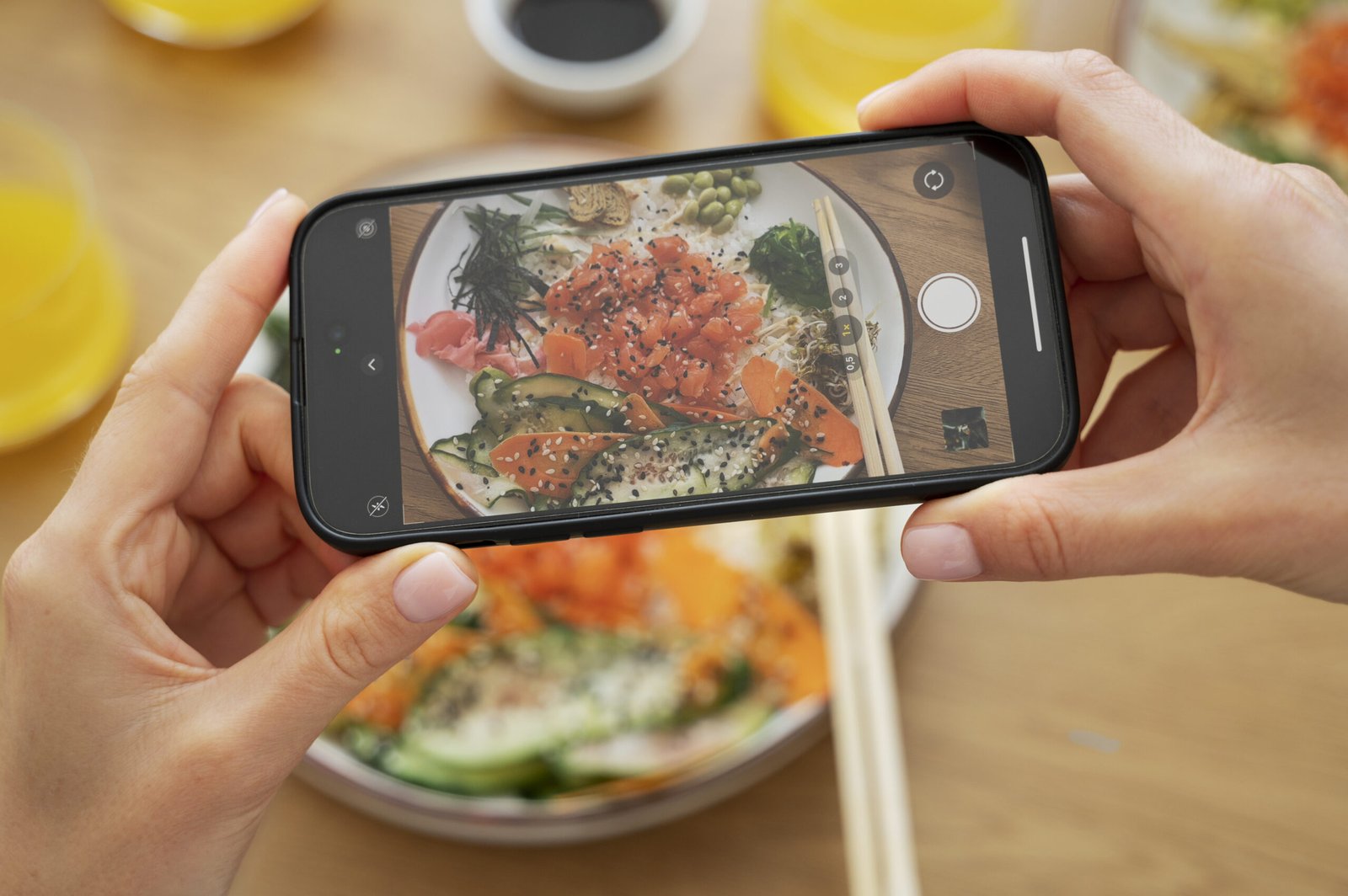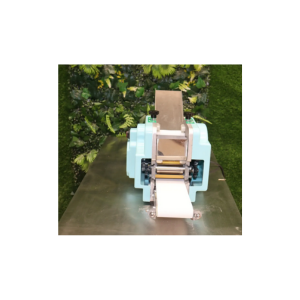The Importance of Food Apps for Cloud Kitchen Growth in USA
Food apps are a major factor in the expansion of cloud kitchens throughout the United States in the quickly changing culinary environment. These digital platforms not only close the gap that exists between consumers and food providers, but they also boost customer engagement, increase operational efficiency, and greatly expand cloud kitchens’ potential profitability. The growth of food delivery app development in the USA has played a significant role in enhancing these platforms, making it easier for cloud kitchens to connect with their customers and streamline operations. In light of the rise of cloud kitchens in the United States, we will examine the complex significance of food applications in this piece.
Understanding Cloud Kitchens
What are Cloud Kitchens?
Cloud kitchens, sometimes referred to as virtual or ghost kitchens, are restaurant concepts that function without a typical dine-in area. These kitchens use technology to expedite processes because they are only intended for cooking food for takeaway and delivery. This business model has been made possible by the emergence of food apps, which has helped cloud kitchens prosper in a cutthroat industry. Cloud kitchens, in contrast to traditional restaurants, concentrate solely on completing online orders. This allows them to streamline their operations, cut expenses, and react swiftly to shifting customer preferences.
The Growth of Cloud Kitchens in the USA
Cloud kitchens have increased significantly in the USA in recent years, mostly due to shifting customer preferences and the ease of internet ordering. Industry projections predict that between 2022 and 2027, the cloud kitchen market will expand at a compound annual growth rate (CAGR) of more than 12%. The growing popularity of food delivery services, especially among Gen Z and millennial customers who value accessibility and convenience, is primarily responsible for this expansion. This tendency was further accelerated by the COVID-19 pandemic, as more individuals looked for safe dining options. This resulted in an unparalleled surge in the use of food delivery applications and cloud kitchens.
The Role of Food Apps in Cloud Kitchen Success
Enhanced Visibility and Reach
Cloud kitchens may reach a wider audience by using food applications as a digital shopfront. Cloud kitchens can raise their profile among prospective clients by putting their products on well-known food delivery services. This increased reach is essential for drawing in new clients, particularly in cities where there is intense competition. With so many options at their fingertips, customers are more inclined to select cloud kitchens with a good online reputation and reviews on food apps. For cloud kitchen operators, this greater exposure may result in a consistent stream of orders and a long-term growth trajectory.
Streamlined Ordering Process
Customers may place orders more easily because of the food applications’ user-friendly UI. Users may easily navigate menus, personalize orders, and finish transactions with a few touches on their cellphones. In addition to increasing client pleasure, this convenience lowers the possibility of order errors, which can harm a cloud kitchen’s reputation. For a kitchen to maintain a customer base, it must have an effective ordering procedure because satisfied customers are more likely to place more orders from the same kitchen. To further improve user ease and promote repeat business, a lot of food applications now provide order histories and saved payment methods.
Data-Driven Insights
Cloud kitchens can make well-informed business decisions because of the useful data insights that food apps give them. Cloud kitchens can alter pricing tactics, improve marketing efforts, and optimize their menus by analyzing client preferences, ordering trends, and peak ordering periods. Cloud kitchens are better able to remain competitive and adapt to changing market demands due to this data-driven strategy. While knowledge of client demographics helps direct focused marketing activities, knowing which dishes are the most popular can aid with inventory management and decrease food waste. In order to stay relevant in a market that is changing quickly, cloud kitchens can use data analytics to spot new trends and modify their product offers accordingly.
Efficient Delivery Logistics
Cloud kitchens must have effective delivery logistics, and food apps frequently combine with delivery providers to make this process more efficient. Cloud kitchens can monitor drivers, guarantee on-time deliveries, and track orders in real-time by utilizing technology. Sustaining customer loyalty and satisfaction requires this level of efficiency. In addition to reducing delays, a well-managed delivery system improves client satisfaction overall. Customers are more satisfied and confident in the service when they can anticipate when their food will come, which is made possible by the GPS monitoring and anticipated delivery timings that many food apps offer.
The Benefits of Food Apps for Cloud Kitchens
Increased Revenue Potential
Cloud kitchens may greatly increase their earnings by utilizing food apps. Cloud kitchens may see an uptick in order volumes by reaching out to a wider client base and expediting transactions. Additionally, a lot of food apps use loyalty programs and discounts as part of their advertising efforts to boost income by encouraging repeat business. These marketing initiatives have the potential to draw in new clients while holding onto current ones, improving the company’s financial picture. Cloud kitchens can investigate different market niches and customize their services to cater to the varied tastes and preferences of clients by using food apps to reach a wide variety of potential customers.
Marketing and Promotion
Cloud kitchens have access to an affordable marketing platform through food applications. Cloud kitchens can advertise to particular client segments with features like sponsored listings and targeted advertising. Furthermore, cloud kitchens can use user-generated content—like reviews and photos—to improve their web profile and draw in new clients due to social media integration. Cloud kitchens may establish a strong brand identity and promote word-of-mouth marketing by exhibiting great customer experiences and eye-catching imagery on these platforms. Word-of-mouth marketing is crucial for drawing in new customers. Moreover, a lot of food apps provide limited-time and seasonal deals, which instill a sense of urgency that may increase sales.
Customer Engagement and Loyalty
Any food business that wants to succeed in the long run needs to develop a devoted consumer base. Cloud kitchens can interact with their customers through push alerts, feedback systems, and personalized promotions by using food apps. Cloud kitchens can increase customer loyalty and encourage repeat business and favorable word-of-mouth recommendations by offering a personalized experience. Customer experience can be improved by adding features that make customers feel valued and appreciated, such as loyalty programs that reward regular diners and personalized suggestions based on past orders. Customers who feel their ideas are valued and heard are more likely to feel a sense of community when input is actively sought out and responded to.
Operational Efficiency
Efficiency gains may result from the incorporation of food apps into cloud kitchen operations. Cloud kitchens can cut costs and errors by automating order processing, inventory management, and customer contact. In addition to saving time, this effectiveness frees up staff members to concentrate on quality assurance and food preparation. Faster service can be achieved by streamlining these processes, guaranteeing that consumers receive their orders on time and that the food is of the highest caliber. Better resource allocation is another benefit of an effective operating model, which enables cloud kitchens to allocate more funds for initiatives like staff training, product development, and other expansion projects.
Challenges Faced by Cloud Kitchens
High Competition
Although cloud kitchens have benefited from the rise of food apps, competition has also increased. It can be difficult to stand out in the crowd of cloud kitchens competing for users’ attention in the food app market. In order to stand out in a crowded industry, cloud kitchens need to make marketing strategy investments and provide distinctive value propositions. To attract customers and increase revenue, businesses must have creative menu options, top-notch customer support, and compelling marketing initiatives. Cloud kitchens need to be flexible as customer preferences change, changing their products frequently to stay on top of the curve and stay ahead of the competition.
Dependence on Food Apps
Cloud kitchens may be at risk if they depend too much on outside food apps. Profitability may be impacted by high commission costs and unstable algorithms. Cloud kitchens should think about expanding their presence across several platforms and investing in their own branded websites or applications in order to reduce these risks. Better control over consumer data and marketing tactics can be achieved by building direct relationships with customers rather than relying too heavily on other platforms. Additionally, since a branded app offers a more customized experience and could promote repeat transactions, it might increase consumer loyalty.
Customer Expectations
Cloud kitchens need to constantly adjust to meet the changing needs of their consumers as consumer expectations do. This entails providing delicious food, quick delivery, and top-notch customer support. This emphasizes the necessity for continuous improvement because falling short of these standards can result in bad press and a loss of clients. It’s critical to stay current with consumer tastes and market trends. It’s also important to engage in staff training so that workers are prepared to provide a consistently great experience. Furthermore, proactively resolving any grievances or problems raised by customers helps foster a foundation of devoted patrons who respect the company.
Best Practices for Cloud Kitchens Utilizing Food Apps
Optimize Menus for Delivery
Cloud kitchens ought to consider delivery when creating their menus. This entails providing recipes that are simple to prepare in large quantities and retain quality during transportation. Seasonal products and time-limited promotions can help spark interest and promote repeat business. Packaging should be taken into consideration because it is essential to maintaining the appearance and quality of food. In order to satisfy a broad spectrum of customers and guarantee that there is something for everyone, menus should also provide a range of pricing points and dietary alternatives. This can boost sales and improve customer satisfaction.
Leverage Technology
A technological investment can improve customer satisfaction and expedite processes. To boost productivity and obtain insightful data, cloud kitchens want to think about including point-of-sale systems, inventory control tools, and customer relationship management (CRM) software. By automating tasks like order monitoring and inventory management, these technological solutions can lower costs and increase profitability. Cloud kitchens may concentrate on their primary skills—creating delectable food—while delegating administrative responsibilities to technology by utilizing it efficiently.
Prioritize Customer Feedback
Growth requires hearing what customers have to say. In order to quickly resolve any issues, cloud kitchens should aggressively seek out reviews and ratings on food apps. Cloud kitchens may make wise enhancements and cultivate a devoted clientele by giving priority to consumer feedback. Customers’ tastes and experiences can be learnt a great deal by interacting with them on social media and through follow-up surveys. Establishing a continuous improvement culture based on input from customers can give an organization a competitive edge because it shows that the company is dedicated to exceeding expectations from customers.
Develop a Strong Brand Presence
For cloud kitchens, developing a recognisable brand is essential. This includes developing a memorable voice for each marketing channel, a consistent messaging strategy, and an eye-catching logo. Cloud kitchens may highlight their distinctive products and establish a personal connection with customers by utilizing social media channels as effective tools for brand promotion and customer engagement. In addition to drawing in new business, a strong brand presence keeps current clients loyal. The main objectives of cloud kitchens should be to communicate their values, brand story, and unique selling points.
Conclusion
In the USA, food apps are essential to the expansion of cloud kitchens. Through the optimization of visibility, optimisation of operations, and enhancement of client engagement, these applications enable cloud kitchens to prosper in a progressively cutthroat market. To ensure their long-term survival, cloud kitchens must embrace technology and adjust to shifting demands as consumer preferences continue to change. Cloud kitchens may exceed customer expectations and position themselves for sustainable growth in the ever-changing food business by utilizing food apps and best practices.






